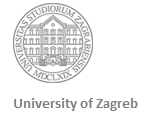Course title: The Victorian Novel. Poetics and Politics
(Former title of the course: Victorian novel – poetics and cultural politics)
Instructor: Professor Tatjana Jukić
ECTS credits: 6
Language: English
Semester: 3 or 5
Enrollment requirements: Introduction to the Study of English Literature 1 and 2
Course description: The course attempts to describe and analyze the poetics and the politics of the Victorian novel. It explores how the novel engages and reciprocates the complexity of the Victorian natural sciences, the Victorian visual arts and the Victorian social and political theory. We will focus on the selected novels by Charlotte Brontë, Charles Dickens and George Eliot. Students are encouraged to read at least one extra novel, by Anthony Trollope and/or Thomas Hardy.
Course requirements: The grade is based on a written essay at the end of term (30% of the final grade), and two tests (30% of the final grade each), as well as on active participation in the class (10% of the final grade).
WEEK 1 Victorian culture and the Victorian novel.
WEEK 2 The Victorian novel and the natural sciences. Lyell and Darwin.
WEEK 3 The social and political prerogatives of the Victorian novel (1). Victorian women writers.
WEEK 4 The social and political prerogatives of the Victorian novel (2). Bentham and utilitarianism.
WEEK 5 The Victorian novel and the visual arts (1). Panopticism. Narration and focalization.
WEEK 6 The Victorian novel and the visual arts (2). The Pre-Raphaelites.
WEEK 7 Midterm.
WEEK 8 Charlotte Brontë, Jane Eyre (1).
WEEK 9 Charlotte Brontë, Jane Eyre (2).
WEEK 10 Charles Dickens, Great Expectations (1).
WEEK 11 Charles Dickens, Great Expectations (2).
WEEK 12 George Eliot, Felix Holt, the Radical (1).
WEEK 13 George Eliot, Felix Holt, the Radical (2).
WEEK 14 Final discussion.
WEEK 15 Final test. Evaluation.
Required reading:
Charlotte Brontë, Jane Eyre, 1847.
Charles Dickens, Great Expectations, 1861.
George Eliot, Felix Holt, the Radical, 1866.
Optional reading:
George Eliot, Middlemarch, 1871.
John Fowles, The French Lieutenant’s Woman, 1969.
Thomas Hardy, Far from the Madding Crowd, 1874.
Antohony Trollope, Doctor Thorne, 1858.
Nancy Armstrong, Fiction in the Age of Photography: The Legacy of British Realism. Cambridge (Mass.): Harvard UP. 2000. 75-124.
Gillian Beer, Darwin’s Plots: Evolutionary Narrative in Darwin, George Eliot and Nineteenth-Century Fiction. London: Routledge & Kegan Paul. 1983. 236-258.
Peter Brooks, Reading for the Plot. Design and Intention in Narrative. Cambridge (Mass.): Harvard UP. 1992. 113-142.
Tatjana Jukić, Zazor, Nadzor, sviđanje. Dodiri književnog i vizualnog u britanskom 19. stoljeću. Zagreb: Zavod za znanost o književnosti Filozofskog fakulteta u Zagrebu. 2002. 157-208, 291-320.
J. Hillis Miller, Victorian Subjects. New York: Harvester Wheatsheaf. 229-235, 289-302.
Griselda Pollock, Vision and Difference. Femininity, Feminism and the Histories of Art. New York i London: Routledge. 1988. 91-114.
Elaine Showalter, A Literature of Their Own: British Women Novelists from Brontë to Lessing. Princeton: Princeton UP. 1977. 37-72.
Herbert F. Tucker (ed.). Victorian Literature and Culture. Oxford: Blackwell. 1999. 307-404.425-437.



